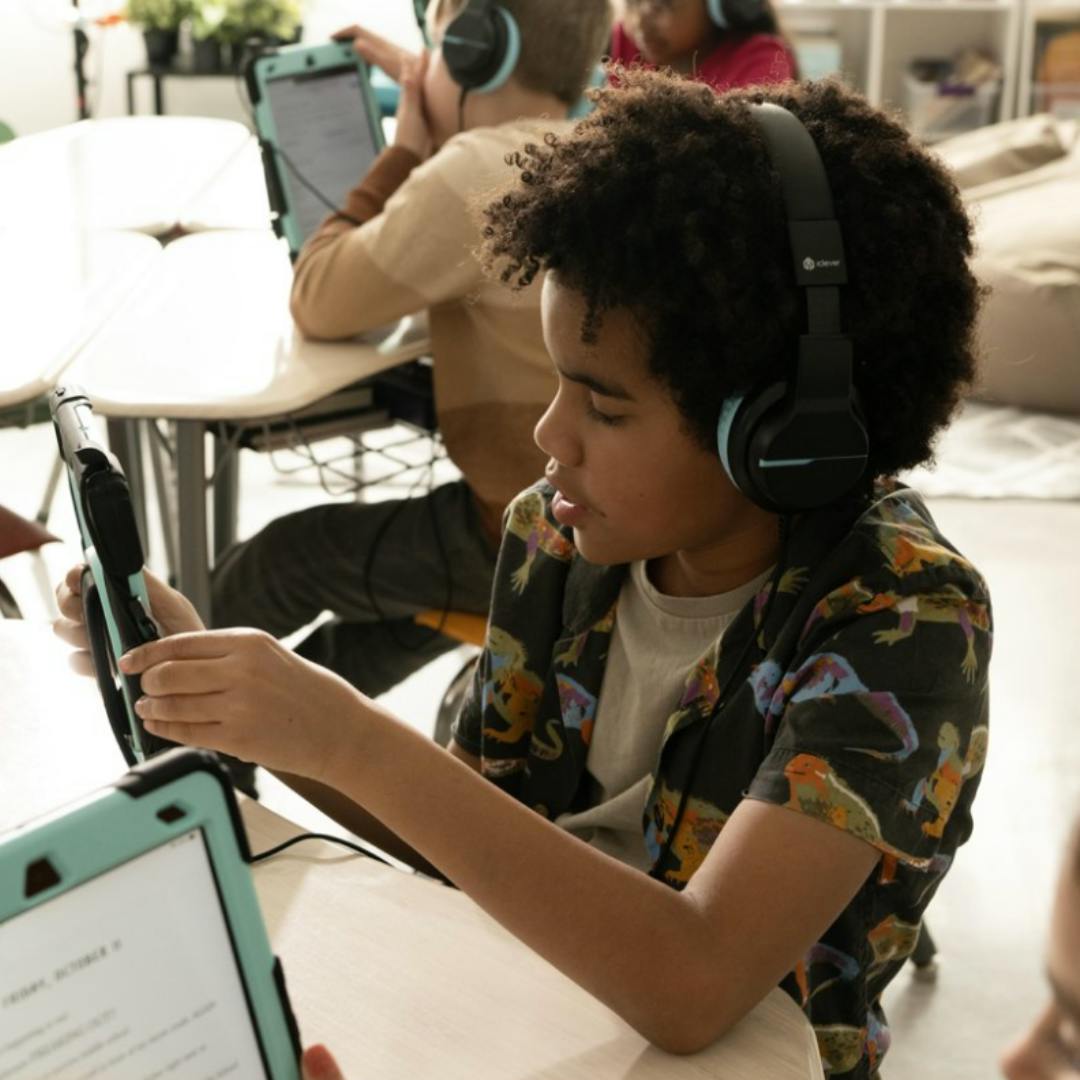June 30, 2025
Turning Screentime into Storytime

In today’s digital age, screens are everywhere. From classrooms to living rooms and even in the palms of our children’s hands, technology is woven into daily life. For many parents and educators, managing screen time feels like a constant balancing act. The good news is that not all screen time has to be a source of guilt.
When used thoughtfully, technology can support literacy development and create engaging, responsive reading environments. By setting healthy boundaries, choosing high-quality content, and tapping into the appeal of gamification, families and educators can use screen time to nurture a love of reading. For many readers, screens can make books more accessible, interactive, and engaging, especially for today’s digital natives.
Health and education experts recommend finding a balance between screen time and other types of play, especially unstructured time that encourages imagination and outdoor activity. When screens are in use, setting clear expectations can help children use technology in healthy ways. According to the Mayo Clinic, helpful strategies include:
- Keeping screens out of bedrooms and charging devices outside of sleeping areas
- Modeling balanced screen habits by spending time together without devices
- Using apps that limit the amount of time children can spend on screens
- Enjoying music, quiet, or nature sounds instead of background TV
- Talking with children about media, commercials, and how to think critically about what they see on screens
When managed intentionally, screen time can also become a powerful tool for learning by turning passive watching into active engagement. For reluctant readers, gamified reading apps can draw on the appeal of visual media to build stronger reading habits. For students with learning differences, features like text-to-speech, adjustable fonts, and audiobooks make it easier to access stories and build confidence (Edutopia).
Personalized literacy apps like Rally Reader add another layer of value. These tools provide real-time feedback in a stress-free environment, helping readers improve their fluency and comprehension while boosting motivation. Even something as simple as being able to choose what to read can make a big difference. Digital platforms open up diverse, student-centered reading experiences that support a wide range of learning styles and can make reading a reality (Neuhaus Education Center).
Screens are not the enemy of literacy. When used with purpose, technology can enhance reading skills and help foster a genuine love of language. From interactive eBooks to personalized read-aloud apps, screen time can become an opportunity to support, encourage, and inspire young readers. Tools like Rally Reader can help parents and teachers feel confident that screen time is supporting learning, not replacing it.